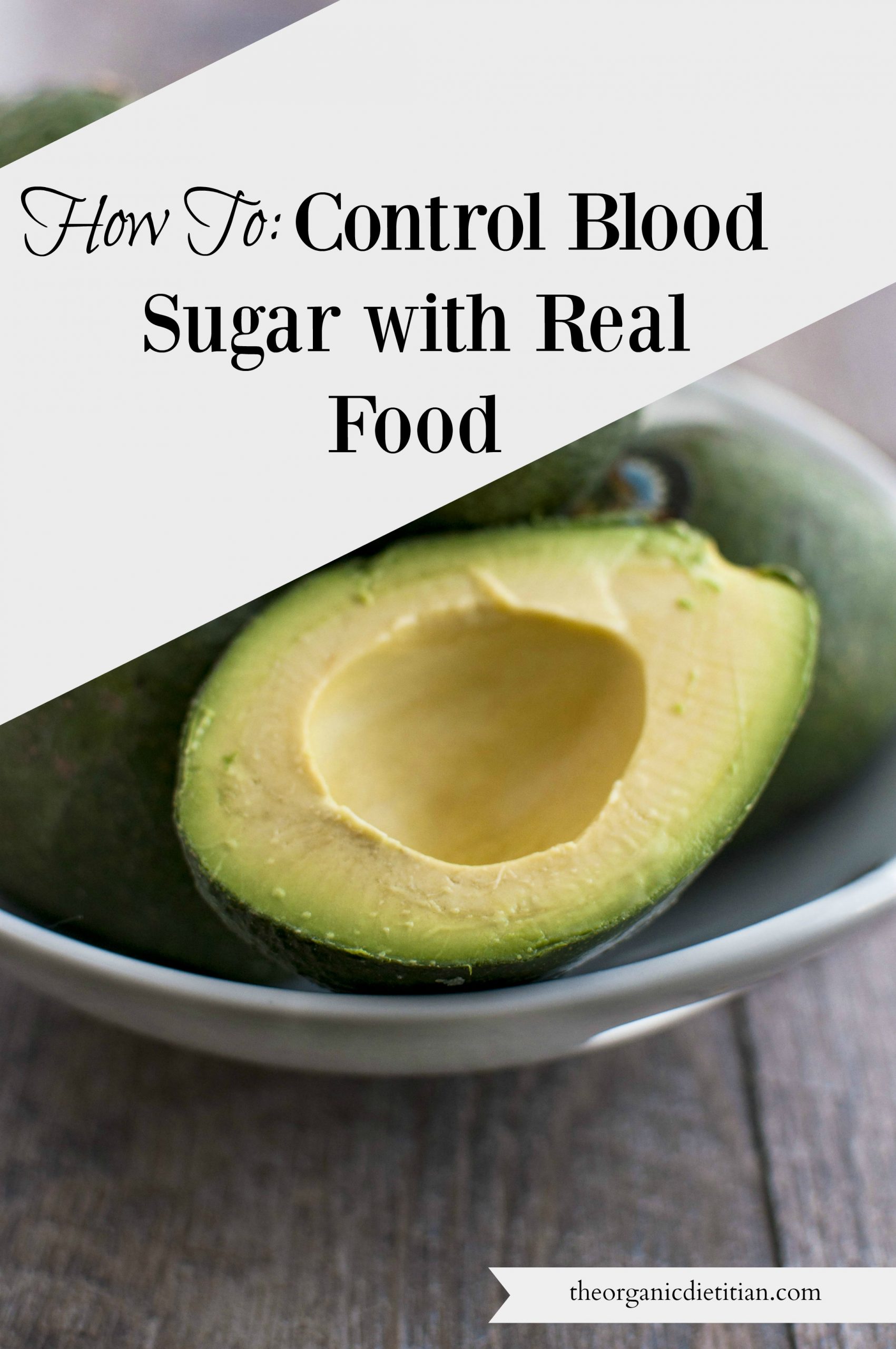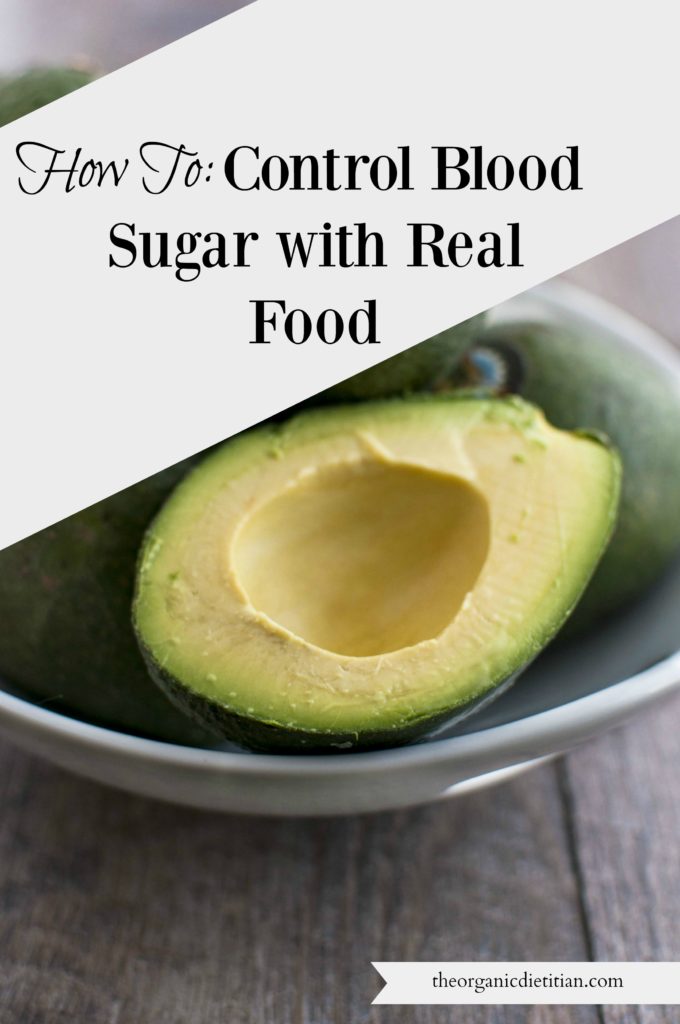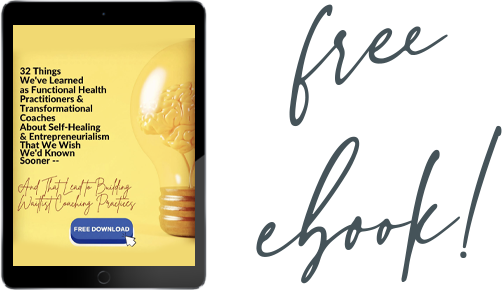21 September, 2016
How to Control Blood Sugar with Real Food

I was recently asked to do a presentation for a wellness program geared toward diabetics. The organization did, however, ask that I use the presentation that they developed. I took a look at the information they wanted me to present and knew I couldn’t share outdated information. Unfortunately, they were unable to let me update the presentation, but they were respectful of our differences. I wanted to take this time to look at what science says regarding how to control blood sugar with real food.
Regardless of your current health status, everyone can benefit from learning how to balance blood sugars with a real food diet. Have you ever experienced the dreaded afternoon energy slump? The constant craving for sweets? Those pesky pounds that just won’t come off no matter how “healthy” you eat? Or do you get angry when you are hungry? Blood sugar balance may be to blame. Everyone can stand to reduce sugar consumption for overall health and wellness. Remember, carbohydrates aren’t the bad guy. It’s knowing how to balance and choose from real food sources that can keep you off of the blood sugar roller coaster. Let’s dive into some popular misconceptions about eating to control blood sugar that everyone can benefit from knowing.
Misconception #1: Eat 6 servings of bread, cereals, and starchy vegetables per day.
In order to better control blood sugar I recommend getting most of your carbohydrates from non-starchy vegetables. Things like broccoli, cauliflower, leafy greens, peppers, and cucumber. Filling half of your plate with foods that are high in vitamins, minerals, antioxidants, and fiber will help prevent sugar spikes.
We can’t talk about grains and starchy vegetables without a quick lesson in carbohydrates. All carbohydrates break down in the body and turn into glucose. Glucose is sugar, which raises blood sugar. Glucose is the simplest form of carbohydrate and provides energy to every cell in your body. But eat too much, especially on their own, and you are at risk for raising your blood sugar to an undesirable level.
Not all carbohydrates are created equal. Most breads and cereals are highly processed and provide little nutritional value. What nutrition they may provide is often in the form of artificial nutrients added back in after processing – nothing real about that. When choosing starchy carbohydrates, like fruits, grains, beans, etc., use them in their whole food form, and use them in smaller amounts depending on your specific needs and activity level. Try my Massaged Mexican Kale Salad or Broccoli Cauliflower Salad.
Misconception #2: Eat 2-3 servings of low-fat dairy products per day.
Dairy, particularly low-fat dairy, is not an essential food for strong bones as some groups want you to think. You can obtain calcium from real foods, like green leafy vegetables, so to recommend that someone consume 2-3 servings is not necessary. If you do choose to add dairy to your diet, keep a few things in mind:
First: make sure that you tolerate dairy products. If you experience symptoms such as diarrhea, stomach cramps, or even breakouts, then it is likely that dairy is not for you.
Second: make sure the dairy product is from a quality source. This means a place where the animals are raised humanely, fed a proper grass diet, and aren’t on unnecessary medications, like antibiotics. Quality dairy contains better nutrients, healthier fats, and is better for the animal, as well as the planet.
Third: choose full fat dairy. Dairy products naturally contain lactose. Lactose is a sugar. Take away the natural fat from dairy, as in low fat and fat free options, and what are you left with? The sugar that can cause elevation in your blood sugar. Low fat and fat free options are not what I would consider real food due to the process of removing the natural fat content.
Fat is an essential part of any dairy product since it is digested at a slower rate. This keeps the release of sugar lactose steady so your blood sugar levels don’t spike as quickly. If you consume dairy, choose full fat from organic sources. Try my Salmon Dill Zucchini Noodles.
Misconception #3: Choose lean meats, chicken, and fish.
The use of the term “lean” implies that the fat from meats are bad for health, which isn’t necessarily true. For instance, salmon is actually a fatty fish, containing about 11 grams in 3 ounces. Based on the recommendation above, people may avoid salmon. The fat you find in wild salmon, however, is the healthy, inflammation fighting omega-3 fat that is actually amazing for your health.
When it comes to beef many people avoid it because they consider it a higher fat protein. Comparing grass-fed cows with animals fed grain, meat from cattle raised on a pasture is found to be naturally leaner, but still contains some of the good fats. Animals raised in poor conditions with unnatural diets tend to be higher in fat, and these fats are often higher in pro-inflammatory fats. Animal protein is not a significant source of carbohydrates or sugar, so they can be a great option for those looking to balance blood sugars.
Misconception #4: Eat 45-60 grams of carbohydrates per meal.
With the understanding that carbohydrates are the very thing that break down into sugar and raise the blood sugar levels, I don’t recommend eating 45-60 grams of carbohydrate in one meal. As a general rule, we consider that 4 grams of carbohydrates is about 1 teaspoon of sugar. If someone ate 50 grams of carbohydrates in one meal then that would be approximately 12.5 grams of sugar. Our bodies only want about 4 grams, or 1 teaspoon, of sugar in our blood stream at once. Too much or too little can be fatal. So what happens to the excess? We store small amounts in our muscles and liver for later use, but the rest of it will get stored as fat.
Studies (1,2) have found that lower carbohydrate diets lead to better glycemic control, which makes a lot of sense. Instead of counting carbohydrates, focus on getting most of your needs from lower carbohydrate, non-starching forms of vegetables that are loaded with vitamins, minerals, and fiber. Try my Cauliflower “Mock” Risotto or Zucchini Noodles with Roasted Tomatoes and Peas.
Misconception #5: Diet soda, beverages sweetened with artificial sweeteners, and 100% fruit juice are good choices.
Drinks sweetened with artificial sweeteners may seem like a great option because most diet drinks (like diet soda or zero calorie drink mixes) have zero grams of carbohydrate per serving, so they will not raise blood glucose on their own. Some research is now debating how artificial sweeteners can negatively alter our beneficial gut bacteria. They also noticed that “people who were heavy consumers of artificial sweeteners had slightly elevated HgA1c levels (a long-term measure of blood sugar) — compared with people who rarely or never consumed artificial sweeteners.” Most artificial sweeteners are cooked up in a factory and are not what I’d consider “real food”. You are better off drinking sparkling water with lemon, or even a probiotic filled kombucha, if you need a good substitute.
It might seem like 100% fruit juice sounds like a great option as well, but once again we have altered nature’s perfect food and removed most of the fiber content. The fiber that may help control blood sugar spikes from the natural sugar found in fruit. If you’ve ever made freshly-squeeze orange or apple juice, you know how little juice you get from one piece of fruit. It looks more like a shot glass full of juice, not the 8 ounce juice you have with your morning breakfast. That cup of orange juice will run you about 18 grams of sugar or 4.5 teaspoons.
Hydrate yourself properly with water or unsweetened herbal tea such as my Gut Supporting Iced Tea or Orange Matcha Iced Tea.
Some of the key points I hope that you take away are:
- Get your carbohydrates from the most nutrient-dense, real foods possible, mostly in the form of non-starchy vegetables.
- Don’t fear fat. Healthy fats from nuts, seeds, avocado, coconut oil, pasture eggs, or fatty fish take longer to digest, which helps our body slow the absorption of sugars found in carbohydrates.
- If you are dealing with sugar cravings, digestive issues, or are trying to reverse/prevent blood sugar issues, getting more fat, moderate protein, and lower carbohydrates may help. People usually see significant improvements in their HgA1c (a measure of blood sugar levels overtime) and non-clinical based outcomes like how they feel, energy, sleep, weight loss, and more with this type of lower carbohydrate lifestyle.
- Nothing great can come from artificial sweeteners or drinking your fruit – it just isn’t natural.
- EAT REAL FOOD.
Everyone is different, so if you are struggling with blood sugar issues then experiment to find what works best for you. If you feel that you need more support than you can check out my coaching services and contact me here.













Love this article.You did an awesome job!Th a nks for sharing.:)